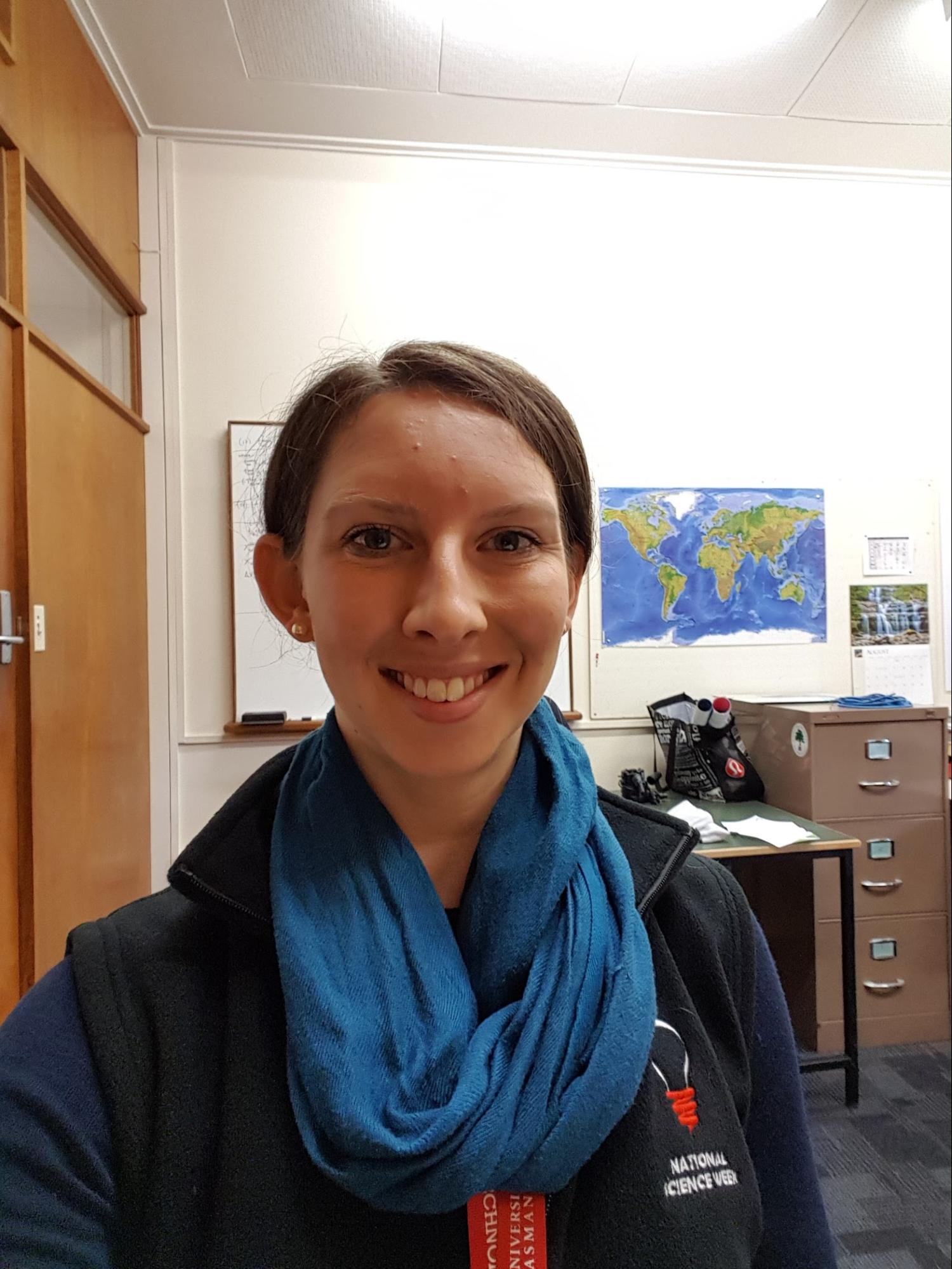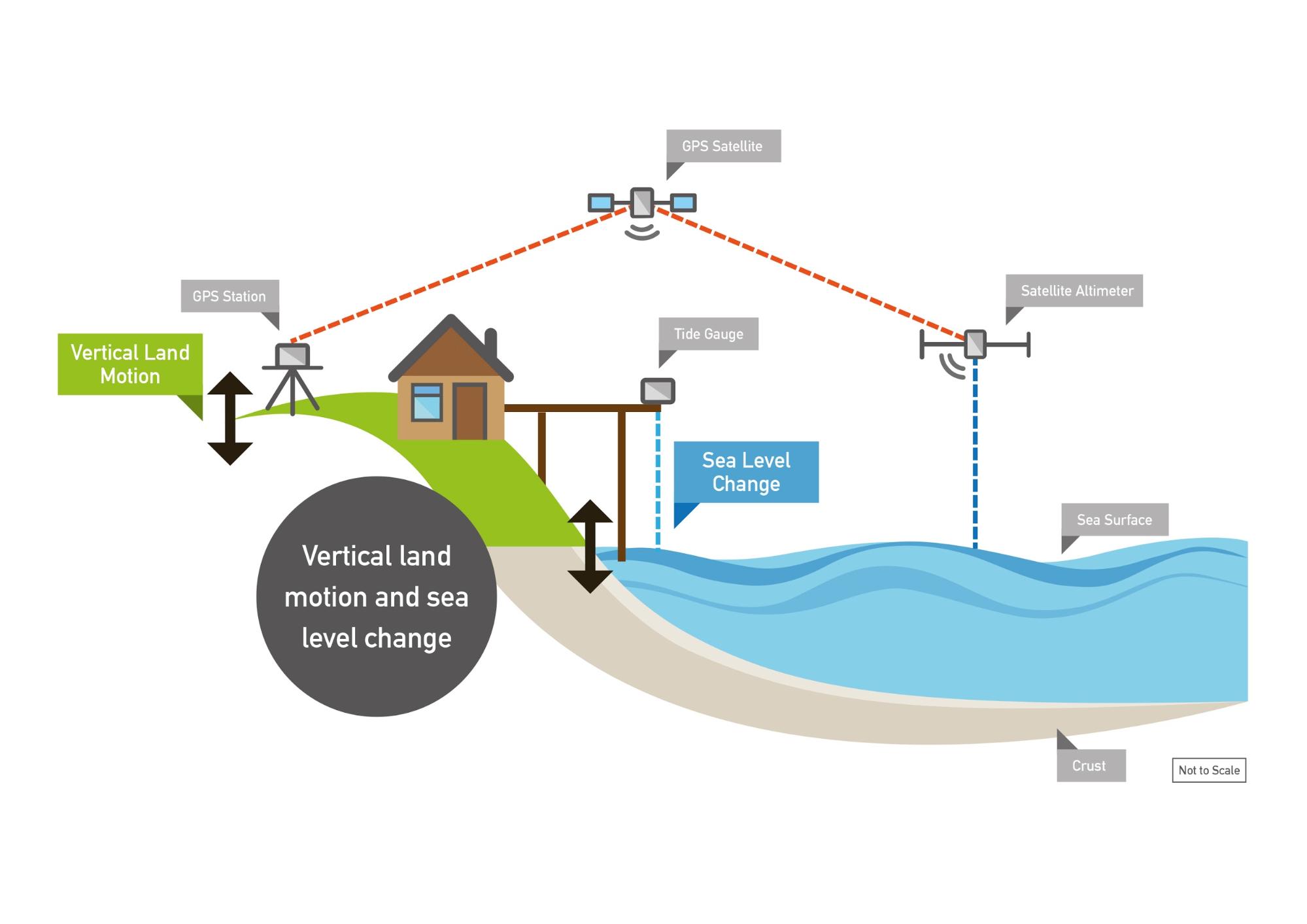
Anna works for Geoscience Australia as a Geodesist, but is currently doing a PhD at the University of Tasmania. Her research is focused on using Global Positioning System (GPS) data from Australian sites to derive a spatially-comprehensive vertical velocity field for the continent.
Anna was interviewed for GeoHipster by Alex Leith.
Q: You’re a Geodesist-hipster, right? So what is hip in the world of geodesy currently?
A: Geodesist-hipster doesn’t roll off the tongue as nicely as Geo-hipster, but we’ll stick with it for now.
There are so many exciting projects and new things popping up in geodesy, so these are just a few of them that I am excited for.
In Australia, it is predicted that by 2020 there will be in excess of 30 GNSS satellites visible at any one time. With the regular launch of new satellites, the major GNSS constellations are soon to reach maturity, creating a whole new world of multi-frequency, multi-constellation applications.
Other Earth observation missions are also being launched in the near future, one of which is the GRACE follow-on, which will enable the monitoring of changes in ice sheets and glaciers, the amount of water in large lakes and rivers and changes in sea level by observing changes in gravity.
In the realm of relativistic geodesy, there is some excitement around using optical lattice clocks for measuring elevation changes as well as the possibility to use the new clocks to redefine the SI unit of time and frequency (the second), effectively re-defining time… A bit closer to home we have the National Positioning Infrastructure capability and the Satellite Based Augmentation System trial, which is testing next-generation SBAS, a world first, in Australia.
Q: Australia has a new datum (GDA2020) that has just been released, and one day it might be dynamic. Do you think we can actually have one, considering the software challenges?
A: ‘Dynamic datums’ sound scary, but aren’t as daunting as they sound. The International Terrestrial Reference Frame (ITRF) could be considered as a datum that is continuously updated, where a new frame is realised every 4 years or so as new data becomes available and realignment is required. The new time-dependent Australian Terrestrial Reference Frame (ATRF), to be implemented in 2020, will be similar with periodic updates and realignment with the global frame. I wouldn’t say that it will be a major challenge for software, as the tools and resources needed are available and will be updated with each release. Noting that GDA2020 (current release) will still be available for users who do not need a time-dependent reference frame.
Q: Precession or nutation: which is your favourite?
A: Nutation! It’s more of a short term wiggle of the Earth’s spin axis due to the effect of the moon’s orbit, and more interesting to look at over short time spans (months to years).
Q: You studied at the University of Tasmania (same as me!); who was your favourite lecturer?! (You don’t have to answer this…)
A: Picking favourites is always dangerous (considering that I work with some of my lecturers now).
Christopher Watson (while teaching us least squares via first principles), for his entertaining idiosyncrasy of starting nearly every written sentence (on the white board) with ‘So,…’. I think the maximum count during one lecture was ~35 ‘So,…’ sentences.
Volker Janssen gets an honourable mention for the infiltration of AC/DC flavoured questions in some of our assessments.
Q: And after graduation, you joined Geoscience Australia, the largest geo-organisation in Australia, as part of their grad program, how was it?
A: The graduate program was an exciting year allowing me to experience the diverse range of earth-science related research undertaken to provide advice to the Australian Government. It was a fast-track introduction to the whole agency where we were encouraged to ‘step outside our comfort zone’ and explore areas that were not within our speciality/focus of our uni degrees. My 3 projects during the 12-month grad program were focused on:
- Assessing the vulnerability of buildings to earthquake damage in Papua New Guinea;
- Understanding the operation of Geoscience Australia’s geodetic networks, including the construction and installation of CORS and conducting a levelling survey from the Majuro tide gauge to the GNSS site in the Marshall Islands;
- Classifying islands in the south Pacific on their vulnerability to climate change, specifically for groundwater storage and availability.
Q: GA are sponsoring your PhD, what is your elevator pitch for your thesis?
A: My PhD research is focused on looking at the vertical motion of the Australian tectonic plate, using permanent GPS sites all over the continent to track surface deformation. Part of my research is looking at reducing the error sources in precise GPS analysis, such as accounting for the wiggle of the centre of the Earth which presents as noise in the reference frame (ITRF2014). Having more accurate and precise estimates of vertical land motion in Australia will also enable more reliable observations of sea level change at tide gauge sites around the Australian coastline. Observations of sea level from tide gauges are made relative to the land that the tide gauge is attached to. Without knowledge of the vertical motion of the land (most commonly from GPS), our observations of sea level change can be biased. Relative sea level measurements are important for understanding local effects such as flooding and inundation, but the combination of sea level estimates from satellite altimetry and tide gauges requires knowledge of vertical land motion.
Q: What’s a surprising fact about plate tectonics that we don’t know yet?
A: There are around twelve tectonic plates that make up the surface of the Earth, but one plate (the Pacific plate) accounts for about 90% of all earthquakes, aka the ring of fire! This video is a great visualisation of earthquakes over a 15 year period. Plate tectonics (from the Late Latin tectonicus, from the Greek: τεκτονικός “pertaining to building”) a.k.a Earth’s lego blocks?!
Q: You grew up in a small town, Wynyard, Tasmania, and then lived in our nation’s capital, Canberra. What’s different and what’s the same?
A: Although Canberra is our nation’s capital, it could still be considered as a rural city (not big and bustling like Sydney). My moving progression has been steady with a moderate change from rural Wynyard to Hobart and then a smaller change from Hobart to Canberra. I am not a big city person, so Canberra suits me well. It is hard to compare what it was like living in Wynyard to living in Canberra as they were such different stages of my life. When I was in Wynyard, I was living with my family and growing up (still doing that now too…). The move to, and then working in Canberra was the first step into the working world, and so the comparisons are hard to draw.
The biggest difference for me would be not being near the beach and seeing open water. Living on the NW coast of Tas meant that you were nearly always in sight of water (river, dam, ocean), or driving along the coast with the salty tang of the sea. In Canberra, Lake Burley Griffin doesn’t quite compare with its brown colouring and periodic blue-green algal blooms.
Canberra also has a much larger temperature differential than Wynyard with hot highs (> 35 degrees celcius) and freezing winter mornings (sub-zero). I do prefer the crisp, clear and sunny winter days of Canberra in comparison to the (mostly) dreary and grey Tassie winter!
Q: I found another interview with you that says you used to ride horses, do you still ride?
A: Moving to Hobart was the end of my competitive horse riding era, which mostly focused on Show Jumping and Eventing. During my undergrad I worked at a racing stable, which was a great way to keep riding and get my horsey fix without having a horse of my own. I still occasionally ride for pleasure, but no longer competitively. My horse, Flynn, is now retired and enjoying the good life in a paddock full of lush grass out the back of Sheffield.
Q: And what else do you do in your free time that isn’t GeoRelated?
A: I enjoy team sports, with football (soccer) taking up most of my Sundays during the season. We are just about to start our Summer Cup games as a pre-season warm-up before getting into the football season, running from March to September.
While in Tasmania I have a list of walks/experiences and adventures to undertake which I am slowly accomplishing on weekends that don’t involve football. (e.g. Tahune airwalk, Russell Falls, Cape Pillar, Cape Hauy, Maria Island, sampling all the wine and cheese…).


Comments
2 responses to “Anna Riddell on monitoring relative sea level change, accounting for the wiggle of the centre of the Earth”
Check my blog post on this topic & work ur way backward
http://blog.zolnai.ca/2016/04/another-take-on-climate-change-part-vi.html
[…] http://www.geohipster.com/2018/01/29/anna-riddell-monitoring-relative-sea-level-change-accounting-wiggle… […]